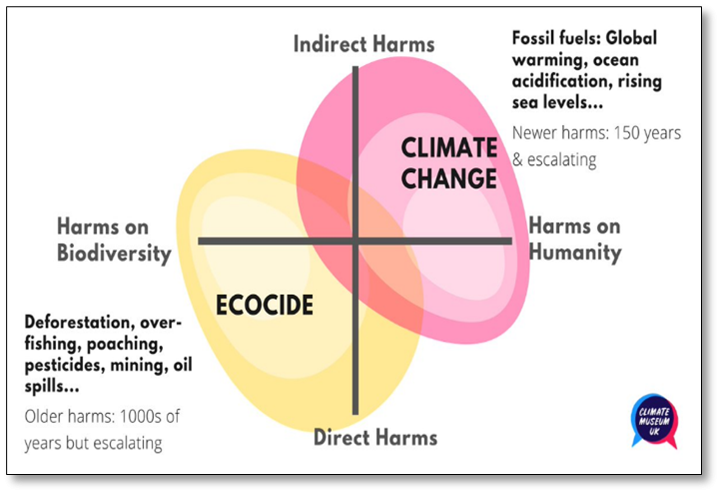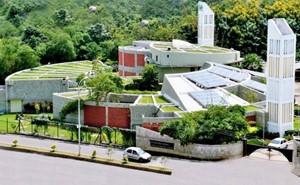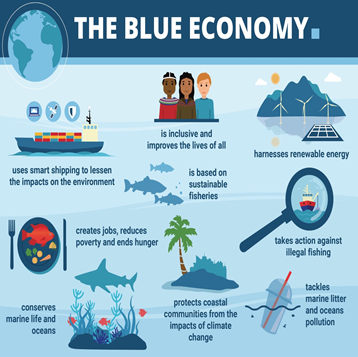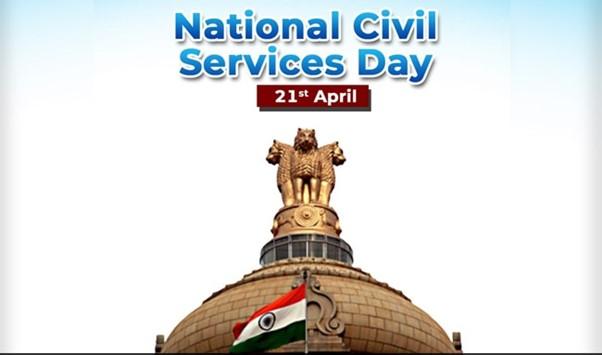Monday, 26th April 2021
NASA’s SpaceX Crew-2 mission
In News
SpaceX along with the National Aeronautics and Space Administration (NASA) launched four astronauts into the International Space Station (ISS).
About the News
- Four astronauts were launched to the International Space Station (ISS) from Florida as part of a collaboration between NASA and SpaceX under the Commercial Crew Program. The mission is called Crew-2 and is the second crew rotation of the SpaceX Crew Dragon and the first with international partners.
- Out of the four astronauts, two are from NASA and two are from the Japan Aerospace Exploration Agency (JAXA) and the European Space Agency (ESA).
- The Crew-2 mission is the second of six crewed missions NASA and SpaceX will fly as part of the agency’s Commercial Crew Program. This mission has several firsts, including:
- First commercial crew mission to fly two international partners
- First time two commercial crew spacecraft will be docked to station at the same time.
Significance
- Research: Starting mid-November 2020, Crew-1 team members have conducted microgravity studies at the ISS. Some of the research that the crew carried with themselves included materials to investigate food physiology meant to study the effects of dietary improvements on immune function and the gut microbiome and how those improvements can help crews adapt to spaceflight.
- Now, Crew-2 astronauts will stay aboard the ISS for six months and continue a series of ‘Tissue Chips in Space’ Tissue Chips are small models of human organs that contain multiple cell types that behave similarly to the human body. According to NASA, these chips can potentially speed up the process of identifying safe and effective drugs and vaccines.
- Many changes occurring in the human body during spaceflight resemble the onset and progression of aging and diseases on Earth but occur much more quickly in microgravity. Thus, scientists can use these tissue chips in space to study diseases that affect specific human organs, which would take months or years to develop on Earth.
- Reuse of Rocket: The Falcon 9 rocket used in the Crew-2 mission was used to launch the Crew-1 into orbit five months ago. The reusable booster is designed in a way that it flies itself back to Earth safely on separating from the rest of the rocket minutes after launch.
- Lower Space travel cost: Through the Commercial Crew Program, NASA plans to lower its costs by sharing them with commercial partners such as Boeing and SpaceX, and also give the companies incentive to design and build the Commercial Orbital Transportation Services (COTS).
- Also, by encouraging private companies such as Boeing and SpaceX to provide crew transportation services to and from low-Earth orbit, NASA can focus on building spacecraft and rockets meant for deep space exploration missions.
World Malaria Day: WHO identifies 25 countries with potential to be malaria-free by 2025
In News
The report, titled “Zeroing in on Malaria Elimination” was released by WHO on the occasion of World Malaria Day observed on 25th April every year. The WHO has identified 25 countries which have the potential to eradicate malaria by 2025 under its ‘E-2025 Initiative’.
Malaria: A life threatener
- Although preventable and curable, malaria is a life-threatening disease caused by protozoa parasites that are transmitted to people through the bites of infected female Anopheles mosquitoes(vector) carrying parasites of genus Plasmodium.
- Symptomsof malaria include fever and flu-like illness, chills, headache, muscle aches, and tiredness.
- Children aged under 5 years are the most vulnerable group affected by malaria.
- The WHO African Region carries a disproportionately high share of the global malaria burden.
- A first generation vaccine known as RTS,S/AS01 is branded as Mosquirix and is known to reduce malaria cases in young children.
- Recently, another candidate for vaccine ‘R21/Matrix-M’ being developed by Oxford University has received substantial success in trials at Burkina Faso with up to 77% efficacy in preventing malaria.
India's Malaria burden and corresponding initiatives
- In South Asian region, India accounts for majority of reported case. However, India is the only high endemic country which marked a major decline in reported cases.
- India adopted National Framework for Malaria Elimination (NFME) 2016-2030 which outlines India’s strategy for the elimination of malaria by 2030.
- In 2017, India launched a 5-year National Strategic Plan for Malaria Eliminationthat shifted focus from malaria control to elimination.
|
The E-2025 Initiative · As a successor of E-2020 initiative, the E-2025 initiative aims to support 25 countries which have the potential to eliminate malaria within a 5-year timeline. · The E-2025 countries will receive technical and on-the-ground support by WHO. In return, they are expected to audit their programs, participate, conduct surveillance, and share reports periodically. |
Primary source: https://www.downtoearth.org.in/news/africa/world-malaria-day-who-identifies-25-countries-with-potential-to-be-malaria-free-by-2025-76646
Ecocide - Edukemy Current Affairs
In News
The French National Assembly recently approved the creation of an “ecocide” offence as part of a battery of measures aimed at protecting the environment and tackling climate change.
About the French Law
- The aim is to strengthen the sanctions available to deal with serious and durable cases of intentional pollution of water, air or soil.
- It would apply to the most serious cases of environmental damage at national level such as the pollution of a French river.

What it Ecocide?
Ecocide is the extensive damage to, destruction of or loss of ecosystem(s) of a given territory, whether by human agency or by other causes, to such an extent that peaceful enjoyment by the inhabitants of that territory has been severely diminished.
Why do we need a criminal law on ecocide?
- No specific law for Ecocide: Given that ecocide is currently only considered a war crime under Rome Statute, only environmental damage in times of war can be prosecuted. Corporate and state criminal responsibility is also excluded under the Rome Statute.
- International environmental law also lacks frameworks to deal with mass environmental damage and destruction. Even the Convention on International Trade in Endangered Species of Wild Fauna and Flora (CITES) and the Basel Convention on the Control of Trans-boundary Movements of Hazardous Wastes, are episodic and limited in scope, apply within state boundaries, and do not extend to ecocide more generally.
- Rising Environmental destruction: The moral grounds are clear for enumerating ecocide among the most serious international crimes.
- In the last forty years there has been a 58% decline in global wildlife due to our ongoing destruction of the biosphere.
- The Intergovernmental Panel on Climate Change (IPCC) claims that climate change could produce a death toll of hundreds of millions in coming decades.
- Accountability: It's fairly easy to grasp events like a pipeline spill or an illegal garbage dump, but how do you hold a person accountable for advancing climate change?
- Accountability can be set by defining Ecocide as one of the crimes under the ICC, which currently has jurisdiction over four categories of crime - genocide, war crimes, crimes against humanity and the crime of aggression. Endowing ecocide as a separate crime would enable it to cover the decimation of ecosystems, as well as the destruction of civilian populations.
- Creating Deterrence: International criminal law does not just hold the perpetrators accountable for crimes committed in the past, but also sets rules and constraints to prevent similar crimes in the future.
- Creating a crime of Ecocide would act as an effective deterrent because the perpetrators would fear the criminal responsibility that they don’t want to be associated with.
But recognising Ecocide as a crime has various challenges
- Legal difficulties for Ecocide: Legal structures and schemes at present do not adequately address the increasing problem of environmental destruction.
- It will be a real challenge to formulate an effective, sustainable, and practical legal definition of ecocide, which would call for an amendment into the Rome Statute and thus be recognised as an international crime. (The Rome Statute is the international treaty setting out the main functions of the International Criminal Court (ICC)).
- It would also be difficult to ensure sufficient grounds for prosecution. There needs to be an individual and his/her intention to build up a criminal trial, which becomes very complicatedr.t. ecocide.
- Limitations of the ICC: Expanding the Roman statute may pile on more work for the ICC, which already is overloaded.
- The ICC also lacks enforcement capabilities of its own, as it needs national authorities to execute its demands. The court's reach has limits as some of the world's largest powers, including the U.S., China, Russia, India, Indonesia, Saudi Arabia, Pakistan and Turkey, aren't its members.
- Efforts to prosecute a company registered in a non-member country would create an enormous political backlash.
- Government will: Even if a clear and legally robust definition of ecocide is in place and proposed at the International Criminal Court, the political will of the countries will be a deterministic
- Once a proposal is submitted at the ICC, it would have to be adopted by a two-thirds majority vote, which means it needs the support of 82 countries. No country has veto power, and all nations have the same voting power regardless of size or wealth.
- Failure of international commitments: One million animal and plant species are at risk of extinction, many within a matter of decades. This is despite legally binding documents such as the Paris Agreement, and national and local government commitments like NDCs.
- This fades the hopes of enactment of a criminal law and its effective implementation for environmental protection.
- Deepen the discrimination: Criminalising ecocide may deepen the core problem of corporate power rather than diminish it.
- Given systemic class and wealth gaps between those who own large corporations and those they employ, this would surely perpetuate systemic divides and disproportionately target working class people.
- Example: Who should be considered a criminal, the company’s CEOs who gave orders and wasn’t the one who placed the chemicals in the water, or the workers who followed the orders. It’s likely that the onus would fall on the workers or the engineers.
Conclusion
Whether it is recognized as a crime or not, ecocide has proved to be a powerful idea and has crystallised a concept that often gets lost in discussions of policy and technology. Also, it is a reminder that Ecocide is not a victimless act: when forests burn and oceans rise, humans are suffering around the world. Moreover, the perpetrators of these acts are not blameless.
https://newint.org/features/2021/03/30/could-international-ecocide-law-be-around-corner
https://www.politico.eu/article/ecocide-environmental-crime/
https://www.lifegate.com/ecocide-crime-definition
https://www.ecowatch.com/are-the-amazon-fires-a-crime-against-humanity-2640400839.html
https://theintercept.com/2019/09/24/climate-justice-ecocide-humanity-crime/
https://time.com/5940759/ecocide-law-environment-destruction-icc/
https://earth.org/ecocide-should-be-a-crime-in-international-law/
euronews.com/living/2021/03/13/why-making-ecocide-a-crime-wont-tackle-root-causes-of-climate-crisis
This Day in History- Bombay Gazette started printing paper on silk

On 26 April, 1841, the Bombay Gazette started printing paper on silk. Found in 1789 as the "Bombay Herald", its name was changed to "Bombay Gazette" in 1791. It was a leading paper of Bombay and covered important events such as the first session of the Indian National Congress in 1885. The Bombay Gazette and Bombay Courier were the earliest English language Indian newspapers published in Bombay. The newspaper continued to be published up to the early 1900s.
Image of the Day- COVID-19 litter

This picture from the Netherlands is the first documented case of a fish dying in a disposable glove. This fish stuck in a disposable glove is a warning about the risks of COVID-19 litter. Around the world, people are finding animals affected by masks, gloves, and other PPE. The pandemic has also boosted demand for single-use plastics, such as plastic cutlery for takeout food. These products are predominantly made of plastic, which can impair movement of wildlife and make them vulnerable to predation.
Harlequin Ichthyosis
- Context: Odisha reported its first-ever case of a baby born with Harlequin Ichthyosis.
- It is an extremely rare genetic disorder that resulted in thickened skin forming over the entire body at birth.
- The skin is dry and scaly, almost like fish skin and hence the term ‘icthyosis’, derived from ‘ikthus’, Greek for fish.
- The disease is caused due to a mutated ABCA 12 gene inherited from the parents.
- Only a handful of cases have been recorded across the world. India’s first recorded case of a baby born with harlequin ichthyosis was in 2016 at Nagpur, Maharashtra.
Primary source: https://www.downtoearth.org.in/news/health/odisha-s-first-case-of-harlequin-ichthyosis-reported-in-berhampur-76633
National Panchayati Raj day
- Context: India commemorates the12th National Panchayati Raj day on 24th April 2021. The PM launched the distribution of e-property cards under the SWAMITVA scheme on the day.
- 24th April 1993 marks the day of institutionalization of Panchayati Raj, through the Constitution (73rd Amendment) Act, 1992.
- Ministry of Panchayati Raj awards the best performing Panchayats/States/UTs across the country under the Incentivization of Panchayats in recognition of their good work for improving delivery of services and public goods each year.
Primary Source: https://pib.gov.in/PressReleseDetailm.aspx?PRID=1713599
Exercise VARUNA 2021
- Context: Indo-French Navy bilateral exercise ‘VARUNA-2021’to be conducted in the Arabian Sea.
- Started in 1983 with a joint vision for 'free, open and inclusive Indo-Pacific', the naval exercise showcases increased levels of synergy, coordination, and inter-operability between the two friendly navies.

Primary source: https://www.livemint.com/news/india/india-france-begin-annual-joint-naval-exercise-varuna-11619349853758.html
The Indian Green Building Council (IGBC)
- Context: IGBC has launched “IGBC Mission on Net Zero” to facilitate India achieve net zero carbon emission status by 2050.
- As a part of Confederation of Indian Industry (CII), the IGBC works to enable a sustainable built environment for all and facilitate India to be one of the global leaders in the sustainable built environment.

- The council offers a wide array of services which include developing new green building rating programs, certification services and green building training programs and organize Green Building Congress.
- The council will work in coordination with the government, World Green Building Council, other agencies to ensure “Net Zero” also called as Carbon Neutrality, a state in which a country’s emissions are compensated by absorption and removal of greenhouse gases from the atmosphere.
Government must think out-of-the-box for a special package for migrants - IE
Essence - With COVID-19 hitting India like a tsunami, and the health infrastructure caving in, the country is once again staring at the issue of lives and livelihoods. Maharashtra and Delhi, where the situation is alarming, have already gone in for lockdowns, triggering an exodus of migrant workers. Extended lockdowns mean that migrant workers can’t protect their livelihoods, and for them, this becomes a matter of their lives. In this context, this article focus on employment opportunities available for them at their native places and the role of government in helping them.
Why you should read this article?
- Know about the employment status of migrant workers from six states — Uttar Pradesh, Bihar, Jharkhand, Chhattisgarh, Odisha and West Bengal after reverse migration resulting from first wave of COVID-19.
- Learn regarding the inability of existing government programmes in providing gainful employment opportunities to the migrants at their native places.
- Identify the actions which government can undertake such as a special package for eastern India, based on infrastructure and industrial development, building new agri-value chains, scaling up “one nation, one ration card” scheme, financial assistance under the Garib Kalyan Yojana, etc.
Women are key to financial inclusion - HT
Essence- This editorial is written in backdrop of how digitization is enabling inclusion of customer segments like women in the financial sector. It can have a transformative impact in boosting household economic resilience which have been historically excluded from the same. Editorial mentions that women are an important and economically valuable consumer segment for banks. But despite digital technologies and government initiatives, challenges like lack of gender-disaggregated data to serve women Jan Dhan customers have not been eliminated. Financial service providers need to deploy strategies that focus on the Jan Dhan women segment by using sex-disaggregated data. Women’s engagement with financial institutions and their ability to access participation in work and credit from such institutions can increase their social capital by expanding women’s access to credit and work opportunities, aiding empowerment and equity.
Why you should read this article?
- To understand how digitisation have transformative impact in boosting household economic resilience.
- To know why women are an important and economically valuable consumer segment for banks.
- To understand challenges or hurdles to serve women Jan Dhan customers.
Link - https://www.hindustantimes.com/opinion/women-are-key-to-financial-inclusion-101619276163691.html
Share the article
Get Latest Updates on Offers, Event dates, and free Mentorship sessions.

Get in touch with our Expert Academic Counsellors 👋
FAQs
UPSC Daily Current Affairs focuses on learning current events on a daily basis. An aspirant needs to study regular and updated information about current events, news, and relevant topics that are important for UPSC aspirants. It covers national and international affairs, government policies, socio-economic issues, science and technology advancements, and more.
UPSC Daily Current Affairs provides aspirants with a concise and comprehensive overview of the latest happenings and developments across various fields. It helps aspirants stay updated with current affairs and provides them with valuable insights and analysis, which are essential for answering questions in the UPSC examinations. It enhances their knowledge, analytical skills, and ability to connect current affairs with the UPSC syllabus.
UPSC Daily Current Affairs covers a wide range of topics, including politics, economics, science and technology, environment, social issues, governance, international relations, and more. It offers news summaries, in-depth analyses, editorials, opinion pieces, and relevant study materials. It also provides practice questions and quizzes to help aspirants test their understanding of current affairs.
Edukemy's UPSC Daily Current Affairs can be accessed through:
- UPSC Daily Current Affairs can be accessed through Current Affairs tab at the top of the Main Page of Edukemy.
- Edukemy Mobile app: The Daily Current Affairs can also be access through Edukemy Mobile App.
- Social media: Follow Edukemy’s official social media accounts or pages that provide UPSC Daily Current Affairs updates, including Facebook, Twitter, or Telegram channels.






